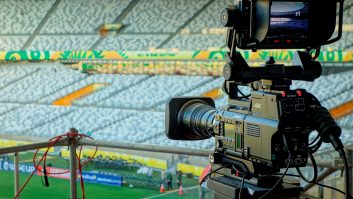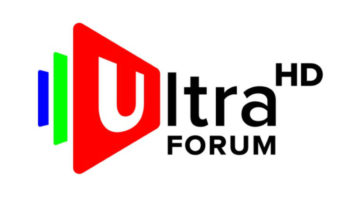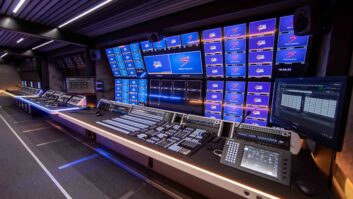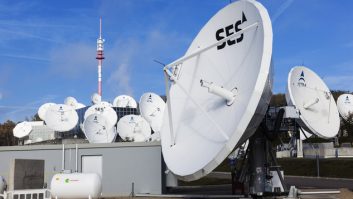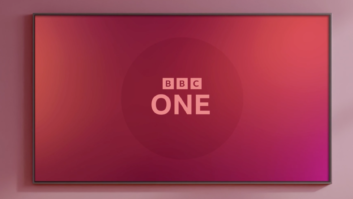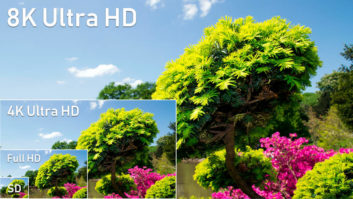Facilities offering high definition production are increasing with some pace right across Europe. Philip Stevens investigates the latest developments in Croatia, following the completion of a DVB-T MPEG-4 experimental phase, which began in 2007.
February saw the completion of the first HD facility and OB truck in Croatia. Operated by Croatia’s satellite service provider, Croatel, the facility is based in the capital, Zagreb. Although experiments in high definition began in 2007 in the three biggest Croatian cities on a DVB-T platform using MPEG-4, the opening of this facility enables the company to provide a mainstream HD schedule.
“We operate Arena Sport Playout facility and studio, the output from which is broadcast exclusively on Croatian Telecom IPTV and DTH platforms,” reports Tonko Barač, managing director of Croatel. “Additionally, in March we started a second playout facility and studio to coincide with the launch of Croatian Olympic Committee TV – the first channel dedicated to sports originating within the country.”
The Arena Sport playout facility and studio is currently broadcasting four HD channels, with the output also down converted for four SD channels. The output is a mix of sports including the UEFA Champions League, Spanish Primera football league, Italian Serie A, NFL, NHL, CEV (Confédération Européenne de Volleyball) tournaments and the EHF (European Handball Federation) championship.
Meeting sports demands
Alongside the studio facility, Croatel has recently commissioned an HD DSNG truck and an Outside Broadcast vehicle built on a Mercedes Axor chassis. “At this moment, Croatel has the only HD DSNG 1+1 in this region, covering uplink services for UEFA Champions League and UEFA Europa League football matches,” he explains. “As far as the OB truck is concerned, we decided at the outset that the vehicle should be designed on a professional level to be able to cover the most demanding sport TV production requests.”
“It has been designed to host up to 16 HD cameras,” declares Barač. “These will include Grass Valley LDK8000 World Elite cameras, supplemented by one LDK8300 super slow-motion unit. We have also included an XT2 EVS System and a Miranda NVision router system, with a 112 by 96 audio and video matrix, and Miranda Densité 3 frame and cross-converter boards.”
In fact, Miranda Technologies has played a key part in the fitting out of the truck and the studio base, with construction and installations overseen by the company’s local distributor and systems integrator, Kapetanović Systems.
Configuring the truck
The NVision 5128 multi-format router, which has been used in both the truck and production facility, provides ‘mix and match’ routing of up to eight different formats including HD,SD, ASI, as well as digital and analogue audio – enabling it to handle future signal routing requirements. The router provides on-board analogue to digital, and digital to analogue conversion for both video and audio signals. It also supports rectangular and squared configurations up to 128 x 128, in blocks of 16.
“Configuring the 5128 is as simple as plugging modules into the front of the frame, and installing I/O assemblies in the rear,” explains Gary Lewis, Miranda Technologies regional sales manager for Eastern Europe. “Reconfiguring the system is equally straightforward. No motherboard changes or internal rewiring are required, so you don’t have to worry about taking the router out of service to reconfigure it.”
Lewis continues, “Signal processing and distribution within the truck is performed entirely by some 40 Miranda Densité modules, which are housed in four 3U multi-format frames. These have with the ability to process 3Gbps, HD, SD, analogue video, analogue audio and AES signals simultaneously, as well as perform branding and multiviewer functionality.”
Key modules in the truck include the XVP-3901 processor for up/down/cross conversion, with simultaneous 3Gbps/HD and SD outputs. There is also integral fibre I/O, full AFD support, and background keying.
Also on board is the HDA-1911 — a 3Gbps/HD/SD SDI video DA which supports a variety of compressed and uncompressed serial digital video signals. The HDA-1911 provides up to nine re-clocked outputs with automatic equalisation for up to 120 metres of cable at 1.5 Gbps and up to 60 metres at 3Gbps.
Miranda’s AMX-1881 is an interface which embeds up to eight AES 24-bit 48 kHz digital audio signals into a single HD/SD serial digital video signal. This module provides audio and video signal presence detection and reporting, and local or remote configuration and control.
Back at base
“Within the HD facility we have also provided three 3U Densité frames which handle Arena Sports’ signal processing,” reports Lewis.” To ensure that up/down converted signals are presented in the correct aspect ratio, Croatel uses a number of Miranda’s Densite XVP-1801 cross converters with Active Format Description for final chain adjustments.”
The playout centre has also been equipped with three Miranda Kaleido-X16 HD multiviewers. Combined with the router these provide monitoring for 10 ingest input channels in High Definition, as well as for 26 satellite feeds from 14 decoders. These multiviewers come with 16 inputs, two multi-viewer outputs, and two router outputs.
“All Kaleido multi-viewers can provide monitoring of stereoscopic 3D signals,” states Lewis. “Should Croatel require 3D signal processing or branding, it can install additional modules in the existing Densité frames.”
To handle playout, Croatel opted for the Neptune automation system from UK-based Pebble Beach Systems. Neptune controls all four of Arena Sport’s playout channels with full Air Protect, and main and backup ports for each channel. In addition to controlling three Grass Valley K2 servers, Neptune also interfaces eight Miranda Densité LGK-3901 logo card (four HD and four SD logos) inserters and controls an NVISION router. The system was supplied with Anchor Media Management which auto-restores media from the Storage Area Network (SAN) to the playout servers.
Because the demands of the Croatian Olympic Committee TV are somewhat less, a Neptune Lite system will be integrated with the Avid playout server platform and an ingest system from MOG Solutions. The basic playout package includes a Client and a Device Controller, which controls broadcast devices via RS422 or network interfaces.
Mixing it up
For both the facility and OB truck Barač has opted for Grass Valley vision mixers. “In the vehicle we are using Grass Valley Kayak 300HD three M/E production switcher. For the Arena Sport operation, we have installed a Kayak HD100 one M/E switcher, while to meet the needs of the Croatian Olympic Committee TV facility, we have selected the Kayak DD1 one M/E mixer. We have been using Kayak production switchers for many years, and they fulfil all of the technical needs of our skilled production team.”
On the audio side, different suppliers have been selected for varying needs. The OB truck is equipped with a Studer Vista 5.1 with 196×128 AES input/output. At the Arena Sport facility, Croatel is using Junger Audio MIX4 with HD/SD SDI interface, as well as Yamaha DM1000 with additional MY A/D D/A boards. For the Croatian Olympic Committee facility the choice has been Yamaha O2R 96VCM.
“When it comes to graphics, we have a complete designer team and they are using Adobe Production Premium CS5, with different plug-ins from Zaxwerks plus Red Giant. We also utilise MagicSoft CG with BlackMagic Design DeckLink Studio 2,” he reveals.
With the new truck and studio facility in place, Barač has an optimistic view of the future. “Croatel is equipped and ready to fulfil all the requests for its services from the south eastern region of Europe. In a way, we are forerunners in the HD production in this region. HD has become a standard in sport TV production — and as the need for such programmes is still increasing, we think that we are on the right track.”
